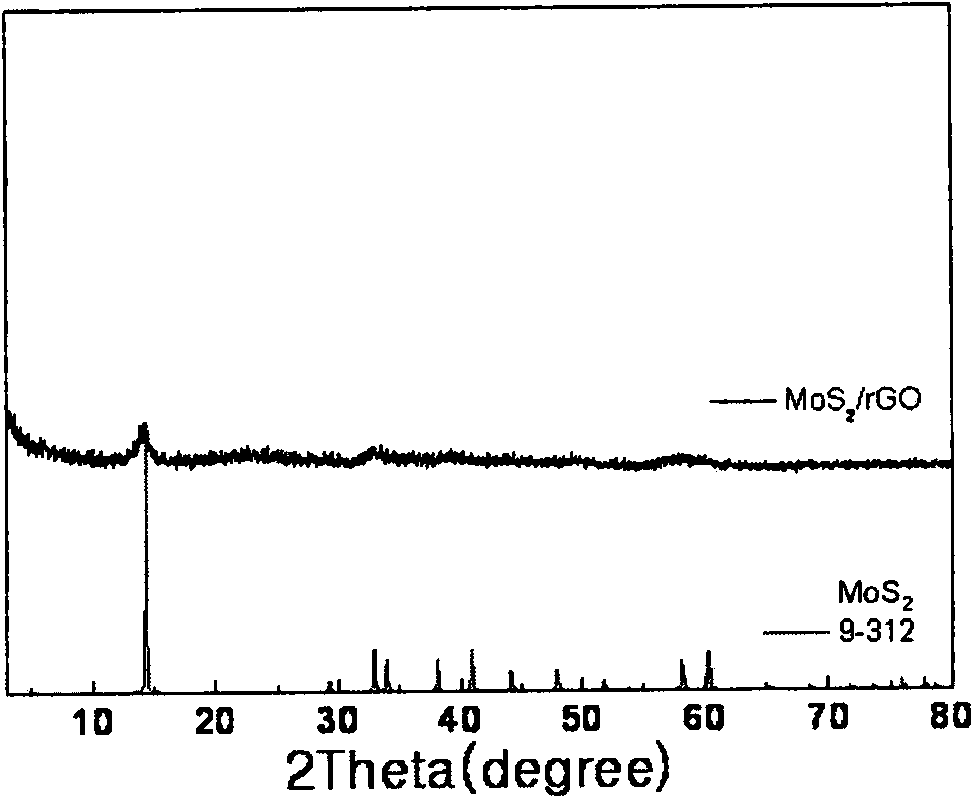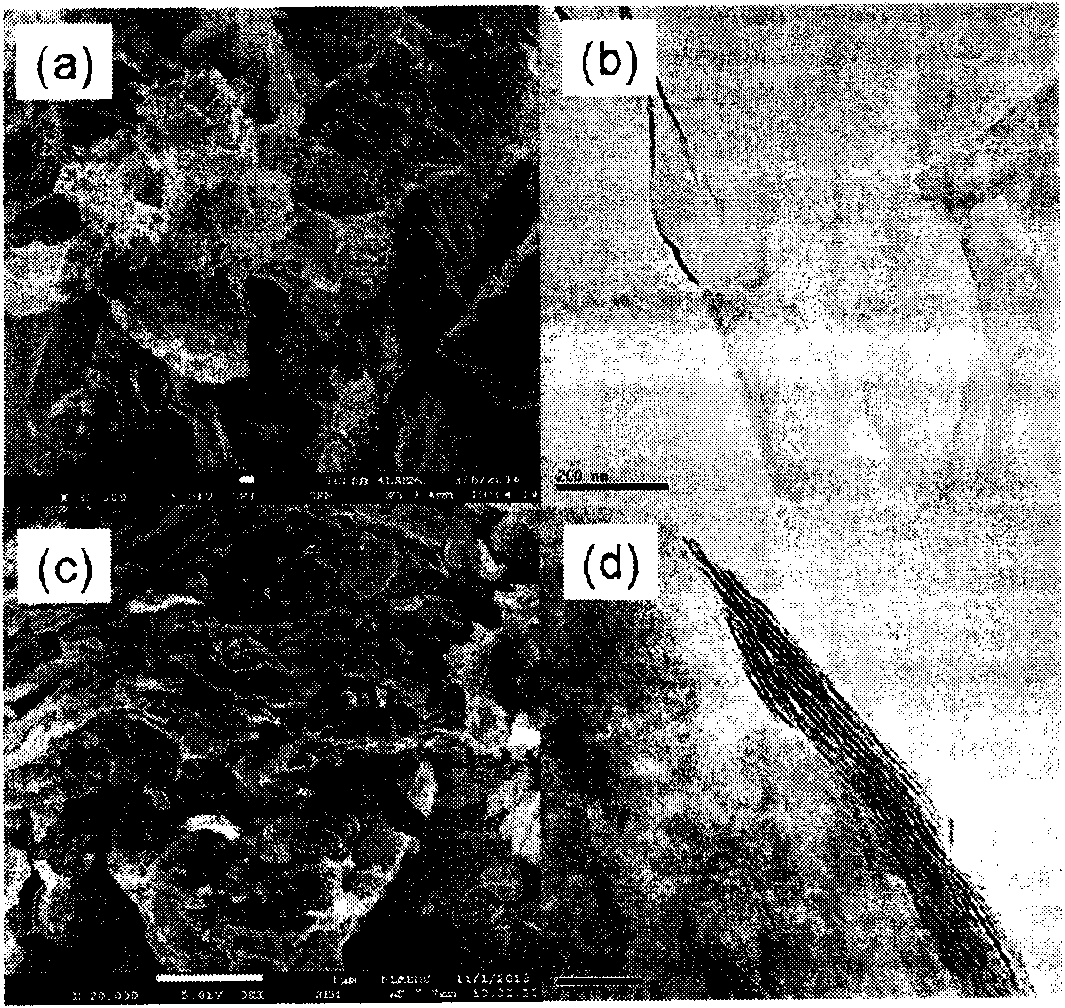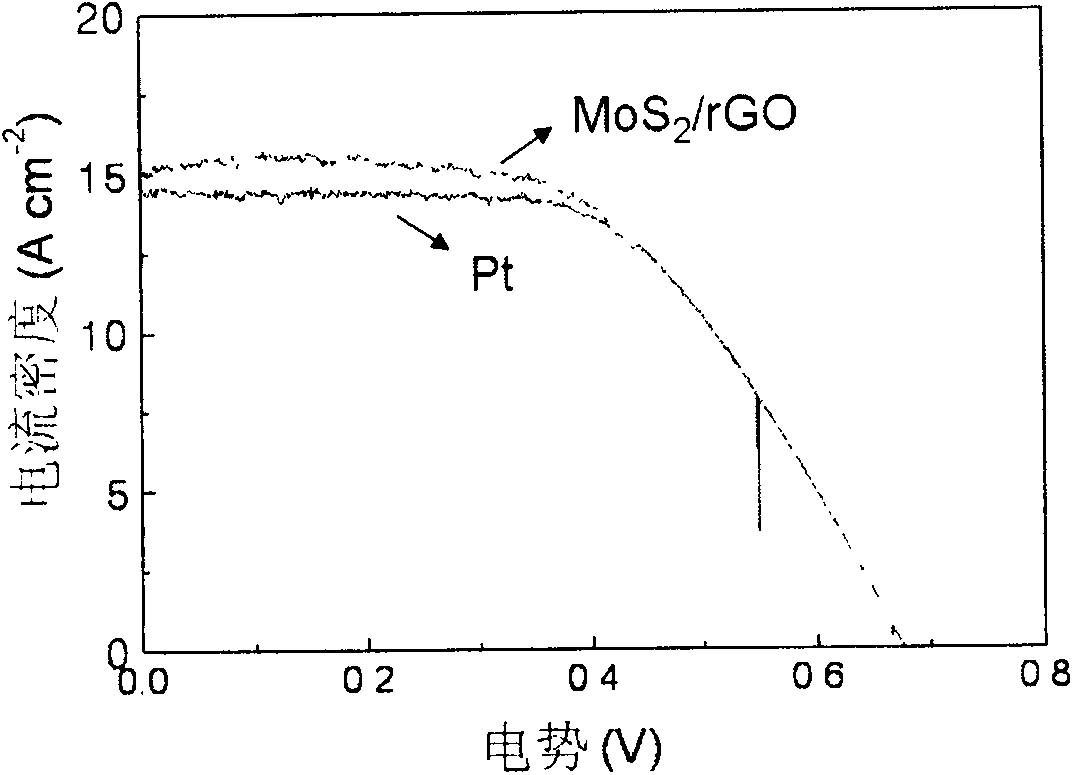Counter electrode made of metal sulfide and graphene composite materials and preparation method and application of counter electrode
A metal sulfide and composite material technology, applied in circuits, capacitors, photovoltaic power generation, etc., can solve the problems of ineffective synthesis of molybdenum disulfide, poor structural controllability of molybdenum disulfide, etc., and achieve good electrical conductivity and catalytic ability. , low cost and simple preparation process
- Summary
- Abstract
- Description
- Claims
- Application Information
AI Technical Summary
Problems solved by technology
Method used
Image
Examples
Embodiment 1
[0029] Example 1: Preparation of two-dimensional molybdenum disulfide graphene counter electrode
[0030] 1) Synthesis of two-dimensional molybdenum disulfide graphene: 0.25g molybdenum disulfide powder (Tianjin Guangfu Fine Chemical Research Institute, AR) and 0.05g graphene powder (prepared according to the modified Hummer method, commercially available graphite alkene powder) was placed in a round-bottomed flask, 10 mL of tert-butyllithium was injected under the protection of argon atmosphere, and stirred for 24 h. After filtration, lithiated molybdenum disulfide was obtained [see Angew.Chem.2010, 122, 4153 Angew. Chem. 2013, 125, 4254] Graphene Mixtures. The lithiated molybdenum disulfide graphene mixture was dispersed in 500 mL of distilled water, and ultrasonicated for 3 hours to obtain a mixed suspension containing molybdenum disulfide and graphene. After the solution was allowed to stand for 24 hours, the upper suspension solution was filtered and washed with a large a...
PUM
 Login to View More
Login to View More Abstract
Description
Claims
Application Information
 Login to View More
Login to View More - Generate Ideas
- Intellectual Property
- Life Sciences
- Materials
- Tech Scout
- Unparalleled Data Quality
- Higher Quality Content
- 60% Fewer Hallucinations
Browse by: Latest US Patents, China's latest patents, Technical Efficacy Thesaurus, Application Domain, Technology Topic, Popular Technical Reports.
© 2025 PatSnap. All rights reserved.Legal|Privacy policy|Modern Slavery Act Transparency Statement|Sitemap|About US| Contact US: help@patsnap.com



